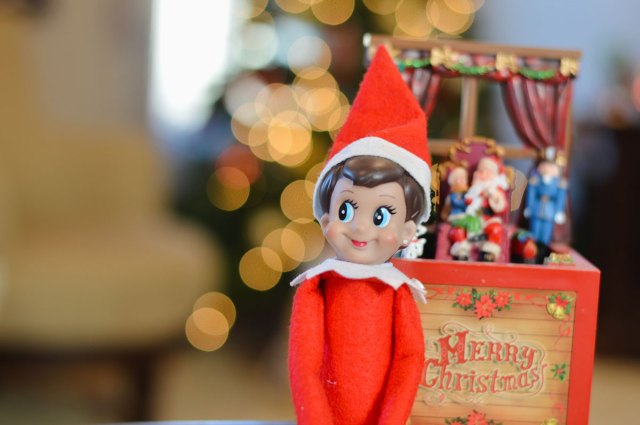When my son, George, returned home from preschool that first day in December, he couldn’t wait to tell me about their new class elf, Snowflake. “She made a snow angel on our teacher’s desk!” he said, giggling.
Each day, he came home with new stories about Snowflake: she built a fort out of peppermints, she played in a ball pit of M&Ms, she got herself stuck on the ceiling fan. I laughed at each report, thankful for the creativity and care his teachers invested in curating this magical, new tradition.
About a week into the festivities, though, George arrived home with a question: “why don’t we have an elf at home?” I gulped and shrugged my shoulders as I unloaded the dishwasher.
“I guess, well, because Mommy doesn’t want one,” I replied.
“Why wouldn’t you want one? They’re so fun.”
“They seem like a lot of work to me,” I said after a short pause.
I actually couldn’t imagine taking on more responsibilities. Between work and motherhood, I could hardly keep the house plants alive. I felt myself falling short in every area of my life. And I had the perpetual sense that someone was watching me, evaluating my performance, taking note of each time I served chicken nuggets for two meals in a row or bribed my kids with candy to take their baths.
Related: A Genius Answer to “Is Santa Real?”
I had a list of unwritten rules about what was required to be a good mother. Each day we did not work toward our goal of 1,000 hours outside or 30 minutes of read-aloud time, I sensed that I was receiving a demerit. That someone, somewhere, was going to place me on the naughty list.
The idea of adding an elf—a figure I had to move, arrange, and play pretend with, all after tucking my kids into bed—to my already full load felt like an unwelcome burden.
Still, George wanted an elf. He was enamored… and persistent. So I conceded to his wishes and placed an order for our own house elf. When it appeared on our doorstep, my son was ecstatic. He nodded at me as I lifted the elf from his package. In it, there was a book: one that detailed a narrative about the elf. There, we were also introduced to a list of rules.
According to the Elf on the Shelf book that accompanies the figure, kids are told that 1) they can’t touch the elf without it losing its magic, and 2) the elf leaves each evening after bedtime to visit the North Pole and returns in the morning. After reading the book aloud, I said to my son, “but that’s not how the elf is going to live here.”
I proceeded to invite my son to take charge of the elf. I told him that he got to touch him and move him—that he was responsible for creating the magic. At first, he resisted: “that’s not what they let us do at school,” he replied. But then I told him, “not all elves have to live the same way.”
He accepted my logic. And it ended up being such a success! While I cooked dinner, my son made the elf a wardrobe out of construction paper. As I tidied the house at night, he built the elf a palace out of Magna-Tiles. On more than one occasion, I overheard him singing the elf a lullaby before they both went to sleep, together, in the same bed.
These new rules, where my son was in charge, fostered pretend play and imagination. It didn’t have to go this way, of course. There is no textbook for these sorts of things. The magic was in the freedom. By refusing to follow a formula, I gave myself a holiday—one where I could bear witness to just how good, how perfect, my son is without my micromanagement.
I found, too, that I could have an actual vacation whenever I resisted some of my internalized beliefs about good motherhood. I purchased grocery store brownies for a potluck rather than dirtying the kitchen to make homemade. I counted Christmas movies not as screen time but as memories. I prioritized my own joy rather than some projection of perfection—and my whole family had a happier holiday because of it.











